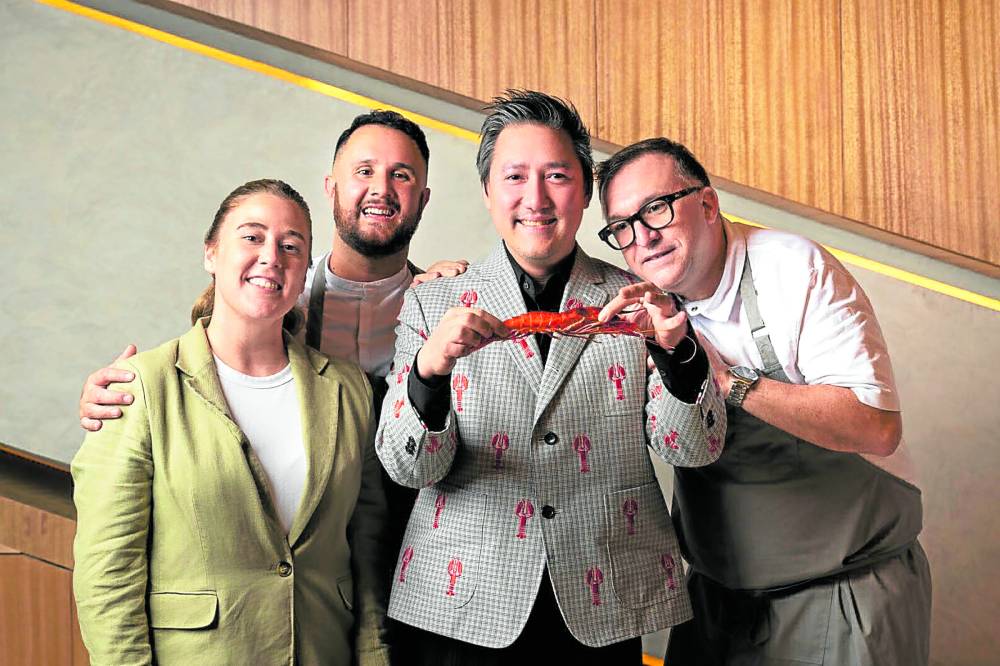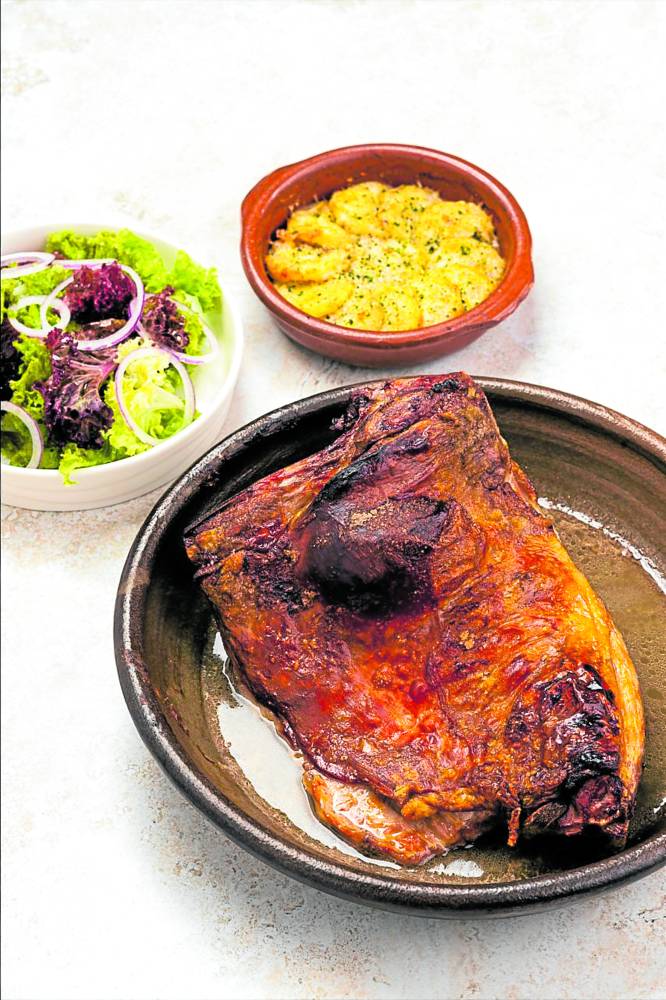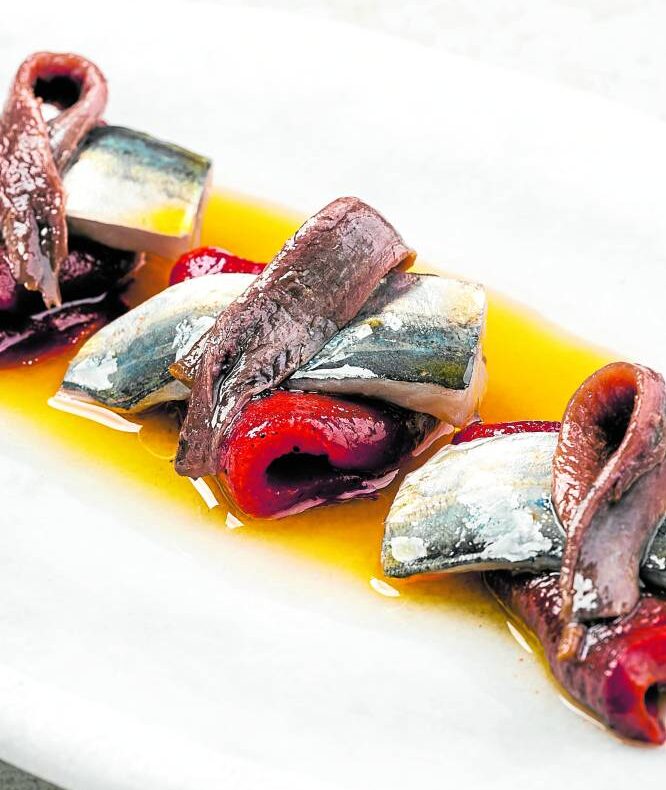
Darkness sets in and architect Carlo Calma’s masterpiece in Alfonso, Cavite, The Lava Rock, is engulfed in a warm, mellow glow. An arresting vision in daylight—the terrific jagged structure in black and gray seems to have broken out of the ground itself—the night brings with it a certain softness, a certain calm.
The contradiction carries over to its restaurant, Asador Alfonso. Sitting at the center of the avant-garde building and flanked by the family’s private villas, the four-story roasting house offers ancestral Spanish cuisine with fine dining flair.
“It’s a very rustic and traditional restaurant in which we apply elements of fine dining,” says Asador Alfonso culinary director and coowner, chef Chele Gonzalez.
Explaining how he manages to balance these elements, Gonzalez tells Lifestyle: “The most important thing is to keep it honest. In this restaurant, nothing is masqueraded; everything is what it is.”
Veering away from Gallery by Chele’s experimental dishes rooted in Filipino heritage, the weekend restaurant (open only on Fridays, Saturdays and Sundays, for lunch and dinner, as well as special events; tel. 0917-1507621; email [email protected]; @asadoralfonso on Instagram) focuses on authentic Spanish fare beyond paellas and tapas.
“It’s about the roots that made me who I am,” adds Gonzalez, who left Spain 13 years ago.
To achieve this, the ingredients are imported from Spain and a special four-ton oven—only one of two Horno Jumaco Maestro Castellano roasting ovens in Asia—was even brought in especially for the restaurant.
“Spanish cuisine is much more than paellas and tapas. But to be able to reach that level of cookery, you need ingredients, you need the place and you need this oven. And most importantly, the team who is behind it—Rodrigo and Irene Osorio, with Rodrigo taking full care of the kitchen, and Irene taking full care of the dining area,” Gonzalez says.

Flavor journey
“Everything that we have been cooking in Alfonso are traditional flavors. We don’t try to invent or reinvent anything. We just try to get the best-quality ingredients and do the best that can be done with my recipes. Simplicity is the most difficult thing to do,” he adds.
True enough, the curated dinner is both luxurious and comforting—and eye-poppingly good.
Esparrago y caviar, which features seasonal asparagus from the Navarra region in Spain, is one of those blink-and-it’s-gone dishes, so you have to consciously savor each bite that blends the salinity from the caviar and creamy celeriac toffee with the earthy freshness of the winter vegetable.
The crackle on the sourdough’s crust is spine-tingling, especially in stark contrast to the bouncy and chewy crumb. Served with rich butter made even more delectable by the bits of anchovies, the duo effectively whets the appetite.
According to Gonzalez, the trio of tapas must be eaten in the correct order, which takes the diner to a flavor journey.

The porky smokiness of the Jamon de Wagyu, made with A5 Japanese Wagyu jamon lightly cured in salt, is followed by a crunchy bite of Tosta de Boqueron, which is toasted pan de cristal with tawilis marinated in vinegar, garlic, parsley and extra virgin olive oil.
The tasty series continues with Matrimonio—sweet wood-fired red peppers, boqueron and Cantabrian anchovies piled on top of each other—before going back to jamon, which by now adopts a milder fatty flavor.
When the servers come with the Carabinero, Gonzalez laughingly warns against using cutlery to eat the dish, “If you use the cutlery, I stop the dinner. If anybody here uses cutlery, no more food for you!”
The two pieces of unassuming lipstick-red prawns sourced from the southern part of the Mediterranean Sea are served plainly on a marble plate, devoid of fanfare. Not that the dish needs it. Lightly cooked for less than two minutes with salt, the creamy flavor that bursts forth from the head is so mind-blowing that you just can’t help but try to squeeze it dry. And the flesh is nothing to scoff at either, all soft and sweet and succulent—well worth getting your hands dirty for.

Living the dream
A bowl of Setas y Trufo, chopped up sautéed mushrooms and cured pork jaw mixed with creamy egg yolk and topped with freshly shaved truffle, serves as a beautiful interlude before the main event.
The Lechazo, slow-roasted exclusively milk-fed suckling lamb served with stewed potatoes and green salad, had a very subtle taste. The meat is already exquisite on its own, soft and milky. When dipped in the fragrant jus, the flavor turns stronger, more savory, and tastes best when followed by some crunchy greens drizzled with sherry.
After the long line of flavorful dishes, the light Flan de Teresa for dessert makes for a perfect ending. Made using Gonzalez’s mother’s original recipe as a guide, the custard is much less dense than our local leche flan, almost like thickened cream in texture and taste. The hint of sweet-buttery tones from the caramel sauce makes it all the more exquisite.
When Gonzalez said he wanted to bring a different experience this time around, he wasn’t kidding. And while Calma has mentioned that the 9.4-ha property was actually his father Pabling’s dream, Gonzalez finds himself living the dream as well.
“It’s a vision of two crazy minds, Carlo Calma and Chele Gonzalez,” the chef says of Asador Alfonso. “It challenges us to be the best in the evolution of Spanish cuisine. It’s a place I can relax in and I have a restaurant in it, so it’s a dream. This is a place that you imagine would never happen, but suddenly you get with the right partner and a dream comes true.”












































